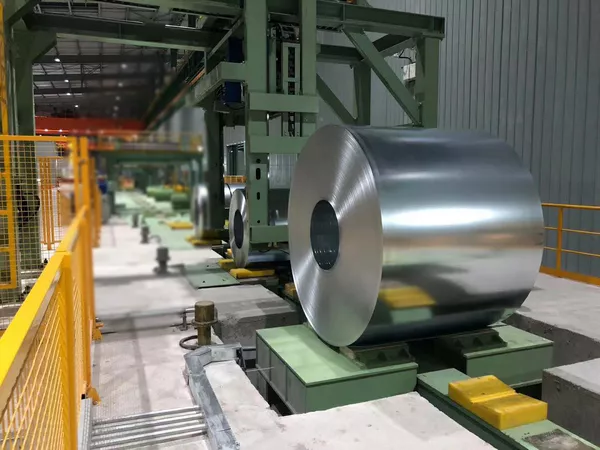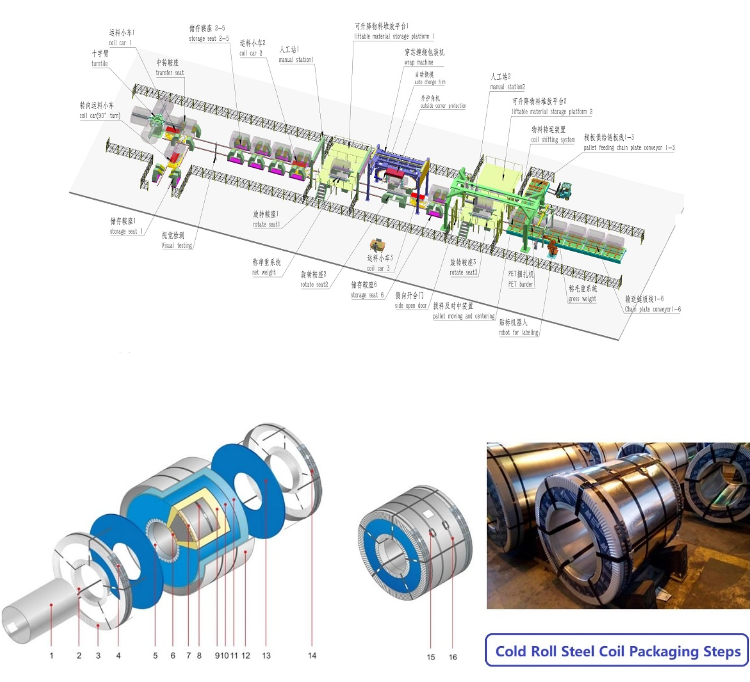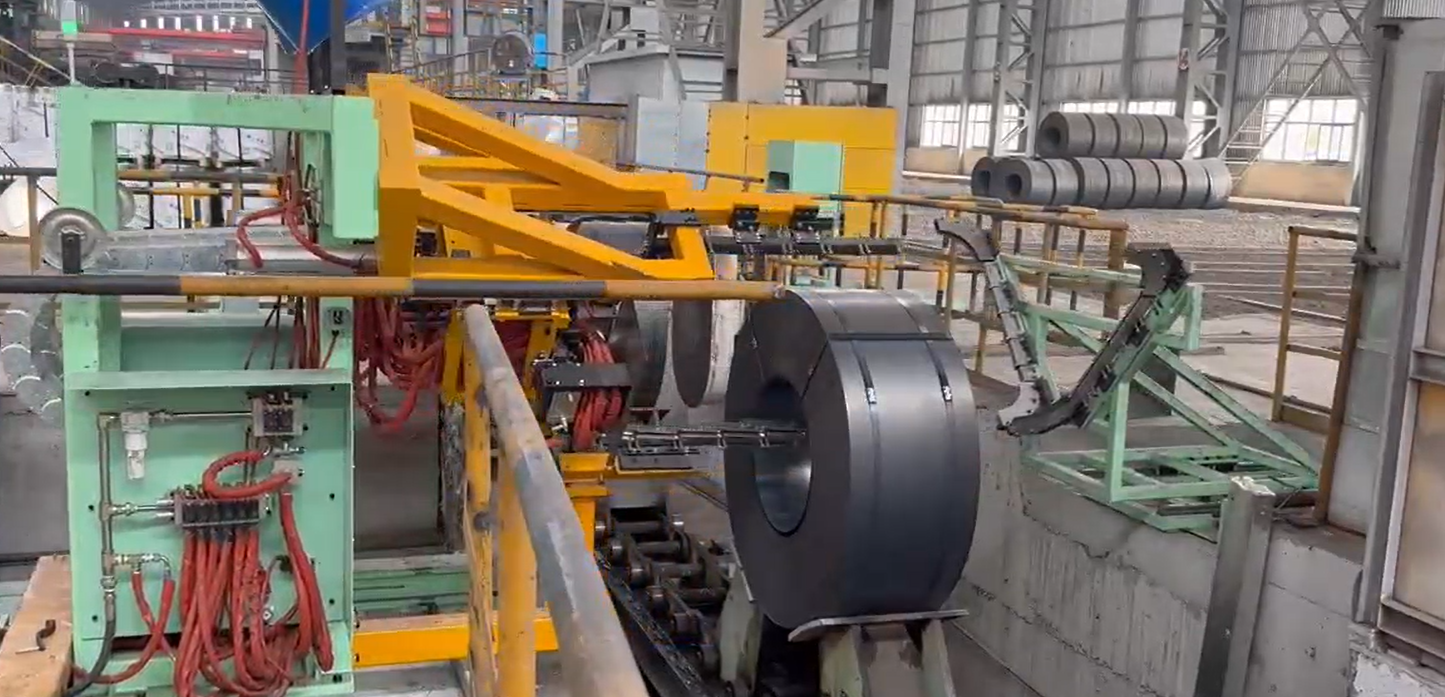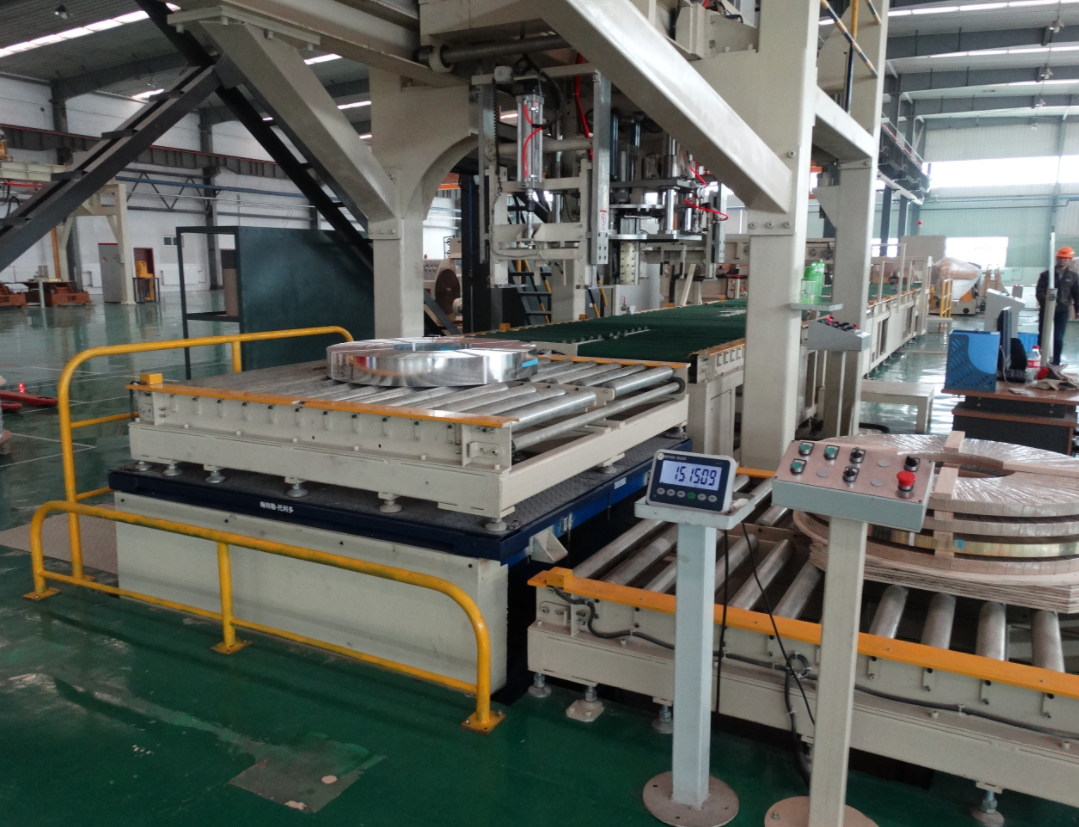Are you running a metal processing plant and constantly battling packaging problems? Your production line might be highly efficient, but everything grinds to a halt at the end. Manual packaging is slow, creates a dangerous work environment, and often leads to damaged products. This reality is frustrating. It costs you money through inefficiencies, potential worker compensation claims, and unhappy clients who receive damaged goods. You feel trapped, knowing you need a better solution but wary of suppliers who promise everything and deliver little.
Russian buyers, operating in one of the most demanding industrial markets, trust this specific automated steel coil packaging system because it provides a complete, reliable solution. It directly tackles the core challenges of efficiency, safety, and product protection. The system integrates automated coil loading, conveying, strapping, and wrapping into a seamless line, which minimizes manual labor, eliminates production bottlenecks, and ensures every coil is perfectly and safely packaged for transport.

This might sound like a solution designed for a different market, but the problems it solves are universal. A bottleneck in a Russian steel mill is the same kind of bottleneck that a factory manager in Mexico or the United States faces. The need for worker safety and product quality is the same everywhere. So, let’s look past the geography and break down the specific features of this system. I want to show you how these same principles can be applied to solve your exact challenges and transform your factory floor.
How Does This System Eliminate Packaging Bottlenecks?
Your slitting or rolling line is producing coils at a rapid pace, but they start piling up, waiting to be packaged. This is a classic bottleneck. It holds your entire operation hostage, delaying shipments and creating chaos on the factory floor. What if your packaging process could not only keep up with but actually match the speed of your production line, creating a smooth, continuous flow from start to finish?
This system eliminates bottlenecks by creating a fully integrated and automated workflow. It combines coil handling, strapping, and wrapping into one continuous, synchronized process. This drastically reduces the need for manual steps and eliminates the idle time that kills productivity. Coils move from one station to the next without waiting.

The Inefficiency of the Old Way
Before I started SHJLPACK, I worked on the floor and later managed a factory. I know the manual process intimately. A coil comes off the line. A worker calls for a forklift or an overhead crane. The operator is busy elsewhere, so the coil sits. Eventually, the forklift arrives and moves the coil to a packaging area. Two workers then struggle to pass steel bands underneath and around the coil, a slow and physically demanding task. Then, they manually wrap the coil with stretch film, often inconsistently. Each step involves waiting and manual effort. If your production line makes a coil every three minutes, but this entire manual process takes ten minutes, you have a permanent and growing backlog. This is a simple math problem that causes complex operational headaches.
The Power of a Synchronized, Automated Flow
An automated system changes the entire dynamic. It’s not just about one fast machine; it’s about a series of smart machines working together. Think of it as a well-rehearsed team where every member knows their role and timing.
Here is a simple breakdown of how automation transforms the process:
| Process Step | Manual Method | Automated Method |
|---|---|---|
| Coil Transport | Wait for forklift/crane. Slow and dependent on operator availability. | Coil is automatically transferred via a powered conveyor from the turnstile. |
| Coil Positioning | Manual positioning on a pallet. Often inaccurate. | Laser sensors detect the coil and automatically center it for the next step. |
| Strapping | Two workers manually feed, tension, and seal bands. Slow and inconsistent. | The automatic strapping head rotates around the coil, applying straps in seconds with perfect tension. |
| Wrapping | Workers walk around the coil with rolls of film. Uneven coverage. | An orbital wrapping machine applies multiple layers of film with precise overlap and tension. |
| Exit & Stacking | Forklift moves the coil again. More waiting. | The finished coil is automatically conveyed to an exit station for easy pickup. |
This synchronized flow means that as soon as a coil leaves your production line, the packaging system is ready for it. The conveyor moves it into place, the sensors align it, the strapper secures it, and the wrapper protects it. The entire cycle can be designed to match your production speed. This eliminates the pile-up of unpackaged goods and makes your output predictable and reliable.
What Makes This Packaging Solution a Safer Choice for Your Team?
You see a worker straining to lift a heavy tool or manually feed a sharp steel band under a multi-ton coil. Every time, you hold your breath, worried about the potential for a serious accident. The costs associated with a workplace injury—medical bills, insurance premium hikes, lost productivity, and damaged team morale—are a constant and heavy pressure. What if you could design out the most dangerous manual tasks from your packaging area, protecting your people from the ground up?
This solution is a fundamentally safer choice because it automates the most hazardous jobs in the packaging process. It removes the need for workers to lift heavy objects, stand in the path of moving coils, or manually handle strapping materials. This minimizes direct human interaction with heavy loads and powerful machinery, which is the most effective way to reduce risk.

Where the Dangers Lie
In a typical manual packaging area, the risks are everywhere. I've walked through hundreds of factories and the danger zones are always the same. Workers face crushing hazards from coils that could tip or fall from a forklift. They suffer severe back and shoulder injuries from the repetitive strain of tensioning strapping tools. They get deep cuts from handling sharp steel bands. The simple act of moving around a busy factory floor with forklifts and cranes creates a constant risk of collisions. These aren't just possibilities; they are frequent occurrences in factories that rely on manual processes. An experienced manager like yourself, Michael, knows that a single incident can halt production for hours and have consequences that last for years.
How Automation Creates a Safer Environment
Automation isn't just about efficiency; it's about intelligent risk control. A well-designed automated line systematically removes the worker from harm's way.
Here’s how specific automated features improve safety:
| Hazard | Manual Operation Risk | Automated Solution |
|---|---|---|
| Crushing/Impact | Workers are near heavy coils moved by forklifts or cranes. | Coils move on fixed conveyors. Safety fences and light curtains stop the line if anyone enters the area. |
| Musculoskeletal Injury | Workers lift heavy strapping tools and manually tension bands. | The strapping and wrapping processes are fully automatic. The worker's job is to supervise from a safe distance. |
| Cuts and Lacerations | Manual handling of sharp steel or PET strapping. | An automatic strapping head handles all feeding, tensioning, and cutting. No hands touch the material. |
| Trips and Falls | Workers walk around coils on messy floors, often climbing on pallets. | The process is contained. Workers operate from a clean, stationary control panel. |
I remember visiting a client's facility before they upgraded. I saw a dedicated employee, a man who had been with the company for 15 years, crouched down, trying to push a steel band under a massive coil. His focus was entirely on his task. He never saw the forklift that was reversing around a stack of pallets. It was a near-miss that shocked everyone. That day, the factory manager told me, "I can't afford to have my people's safety depend on luck." We designed a system for him that removed those risks entirely. Investing in safety is investing in your people, and a stable, healthy team is the backbone of any successful factory.
How Does the System Prevent Costly Product Damage?
You invest heavily in producing perfect, high-quality steel or wire coils. They leave your production line in pristine condition. But then you get a call from an angry customer. The coil arrived with dented edges or rusted surfaces from a tear in the packaging. These complaints are incredibly costly. They lead to returns, freight charges, wasted material, and, worst of all, damage to your hard-won reputation. Imagine a packaging process so precise and protective that product damage during transit becomes a problem of the past.
The system prevents this damage by using automation for both gentle handling and robust protection. Automated V-block conveyors move coils without the jolts and impacts from forklifts. Then, the orbital wrapping machine applies a tough, multi-layer cocoon of stretch film with consistent tension. This cushions the coil's vulnerable edges and surfaces, securing it tightly for the journey ahead.

Why Manual Packaging Fails to Protect
Product damage is often a direct result of human inconsistency. When a forklift operator is in a hurry, the tines can easily nick the edge of a coil or dent its side. This is one of the most common sources of damage I see. When workers stack coils manually, improper placement can create pressure points that lead to deformation. The wrapping itself is also a major issue. Two different workers will wrap a coil in two different ways. One might pull the film tighter than the other. One might miss a spot, leaving it exposed to moisture, which leads to rust. This inconsistency means you can't guarantee that every product has the same level of protection. You are leaving quality to chance at the very last step of your process.
Automation: The Key to Consistent Protection
An automated system treats every single coil with the same precision and care. It's programmed to protect, and it executes flawlessly every time.
Here's how automation shields your products from harm:
- Gentle Conveying: Instead of the abrupt movements of a forklift, coils glide on specially designed V-block or flat-top conveyors. The transitions between different stations are smooth, eliminating impacts.
- No-Touch Centering: Sensors and mechanical guides position the coil for strapping and wrapping without a metal tine or human hand ever needing to push it. This protects the delicate surface finish.
- Perfect Wrapping: This is the most critical part. An orbital wrapper moves around the stationary coil, applying stretch film with digitally controlled tension and overlap. You can program it to apply extra layers on the vulnerable edges. This creates a tight, waterproof, and puncture-resistant package that acts like armor during shipping and handling.
- Integrated Edge Protection: For products that are extremely sensitive, the system can be designed to automatically apply cardboard or plastic edge protectors before the main wrapping cycle begins. This adds another layer of security.
When you're evaluating a new piece of equipment, you're looking for a clear Return on Investment (ROI). Preventing product damage offers one of the fastest paybacks. Think about the total cost of one returned coil: the lost material, the wasted labor, the shipping costs both ways, and the administrative time to handle the complaint. By eliminating just a few of these incidents per month, the packaging line starts to pay for itself.
Why is a Knowledgeable Partner More Valuable Than Just a Supplier?
You’ve been in this situation before. A slick salesperson from an equipment supplier makes grand promises about performance and support. You sign the check and the machine arrives. But it doesn't quite integrate with your existing line, the training is rushed, and when you call for support, you get an answering machine. This experience leaves you feeling abandoned and makes you rightly cautious about your next big investment. What if, instead of a supplier, you could work with a partner? Someone who has been in your shoes, managed a factory, and is personally committed to seeing you succeed.
A knowledgeable partner is more valuable because they provide a total solution, not just a piece of hardware. They take the time to understand your specific challenges, from the physical layout of your plant to the unique flow of your production process. They offer expert advice, customized engineering, and reliable, long-term support to ensure the equipment solves your problems and drives real growth for your business.

The "Sell and Run" Supplier Trap
The industry is full of "box sellers." Their goal is to sell you a standard machine from a catalog. They lack the engineering depth or the factory experience to understand how that machine needs to function in your specific environment. They don't ask about your upstream or downstream processes. They don't consider your material flow. As a result, you are often left with a machine that creates new problems. Maybe it's too fast for your exit conveyor, or too slow for your slitter. When you call for help, the person who sold you the machine is gone, and the technical support team has never seen a factory like yours. This is the trust crisis that Michael, and so many other good managers, face.
The SHJLPACK Partnership Approach
I founded SHJLPACK to be the opposite of that. My journey started on the factory floor. I became an engineer, and then I built and ran my own successful packing machine factory. I have faced the exact same pressures you face: the need to increase output, control costs, and keep my people safe. I made mistakes and learned from them. That experience is the foundation of my company. My mission is not just to sell a machine; it is to share my knowledge and be the partner I wish I had when I was starting out.
Here’s what that partnership looks like in practice:
- Deep Consultation: Our first conversation isn't about our machines; it's about your problems. I want to understand your entire workflow. Where are the delays? What are your safety concerns? What are your growth goals?
- Customized Solution: The "Russian system" is a powerful example, but it's a template. We will design a solution that fits your factory like a glove. We adapt the conveyor lengths, the machine orientations, and the control logic to match your space and your needs.
- Hands-On Installation and Training: My team and I don't just ship you a crate. We come to your facility. We oversee the installation, and we stay until your operators and maintenance crew are completely comfortable and confident running the equipment.
- A Long-Term Commitment: My name, Vincent LIU, is behind this company. My success comes from your success. I am dedicated to building long-term relationships. When you call us years after installation for support or advice on a new challenge, we will be there to help. This is how I achieved my own financial independence and helped my clients grow their businesses. Now, I am dedicated to giving that back.
My Final Insight as an Engineer and Factory Owner
Michael, I have laid out the technical details of automation, but let's talk directly, from one factory manager to another. Your job is a constant balancing act. You have to juggle throughput, cost, and safety every single day. You are searching for a solution that doesn't just work but also provides a clear and defensible return on investment.
From my perspective, the true value of a system like this is not just in the speed of the wrapping or the safety fences. The most powerful benefit is the predictability it brings to your entire operation.
Automated systems deliver consistent output. They deliver consistent quality. And they deliver consistent operating costs, day in and day out. This predictability is the absolute foundation for growth. It allows you to confidently promise delivery dates to your clients. It allows you to accurately forecast your production costs. It allows you to scale up your operations without scaling up your problems and your workforce headaches.
In today's competitive market, the biggest risk isn't the money you might invest in new technology. The biggest risk is standing still while your competitors get faster, safer, and more reliable.
Let's have a conversation. Not about selling you a machine, but about developing a winning strategy for your factory's future.
Conclusion
Ultimately, a trusted packaging system is more than machinery. It's a strategic investment in efficiency, safety, and quality, best guided by an experienced partner who truly understands your world.



